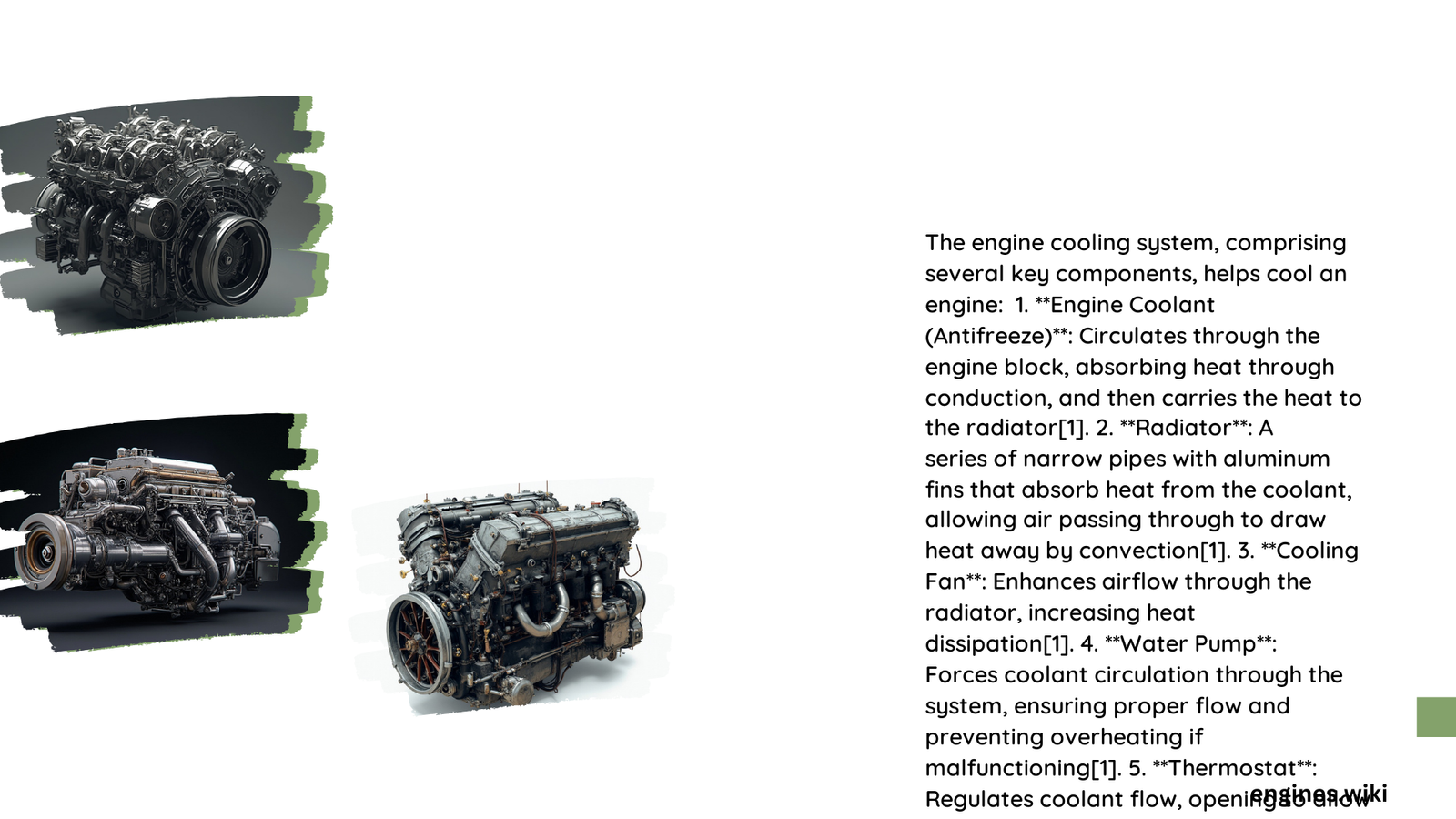Modern vehicle engines generate tremendous heat during operation, requiring sophisticated cooling mechanisms to prevent mechanical failure and maintain optimal performance. The intricate process of engine cooling involves multiple components working in synchronization to dissipate thermal energy efficiently, ensuring engine longevity and preventing potential catastrophic breakdowns.
What Are the Primary Components That Help Cool an Engine?
How Do Coolant Types Protect Engine Temperature?
Coolant plays a crucial role in managing engine temperature. Different coolant technologies offer unique properties:
Coolant Comparison Table
| Coolant Type | Color | Change Interval | Boiling Point | Freezing Point |
|---|---|---|---|---|
| IAT Coolant | Green/Yellow | 2 years/25,000 miles | 260°F | -35°F |
| OAT Coolant | Orange/Red | 5 years/50,000 miles | 260°F | -35°F |
| HOAT Coolant | Yellow/Orange | 5-10 years/50,000-150,000 miles | 260°F | -35°F |
Key Coolant Characteristics
- Raises water’s boiling point
- Lowers freezing temperature
- Provides corrosion protection
- Transfers heat effectively
What Role Does the Radiator Play in Engine Cooling?
The radiator serves as the primary heat exchange mechanism:
- Surface Area Maximization
- Designed with extensive tube networks
- Increases heat dissipation efficiency
-
Allows rapid thermal transfer
-
Coolant Circulation
- Water pump continuously moves coolant
- Creates consistent thermal regulation
- Prevents localized heat accumulation
How Do Cooling Fans Contribute to Temperature Management?
Cooling fans provide critical airflow support:
Electric vs. Mechanical Fans
- Electric Fans
- Precise temperature-controlled operation
- Independent of engine speed
-
More energy-efficient
-
Mechanical Fans
- Directly driven by engine
- Traditional design
- Less adaptable to temperature changes
What Prevents Overheating Through Thermostat Functionality?
The thermostat acts as a critical temperature regulation valve:
- Opens at specific temperature (180-195°F)
- Controls coolant flow through radiator
- Prevents premature coolant circulation
- Ensures rapid engine warm-up
Additional Cooling Enhancement Strategies
- Regular Maintenance
- Flush coolant system periodically
- Check for leaks and corrosion
-
Maintain proper coolant mixture
-
Advanced Cooling Technologies
- Aluminum radiators
- High-performance coolant additives
- Enhanced fan blade designs
Practical Cooling System Recommendations

- Maintain 50/50 coolant-to-water ratio
- Use manufacturer-recommended coolant
- Monitor temperature gauge regularly
- Address cooling system issues promptly
Technical Insights
Thermal management involves complex heat transfer principles:
– Conduction through metal components
– Convection via liquid coolant
– Radiation from engine surfaces
Performance Impact
Effective cooling directly influences:
– Engine efficiency
– Fuel consumption
– Mechanical component longevity
– Overall vehicle reliability
Conclusion
Understanding what helps cool an engine requires comprehensive knowledge of interconnected systems. Proper maintenance, quality components, and proactive monitoring ensure optimal thermal management.
